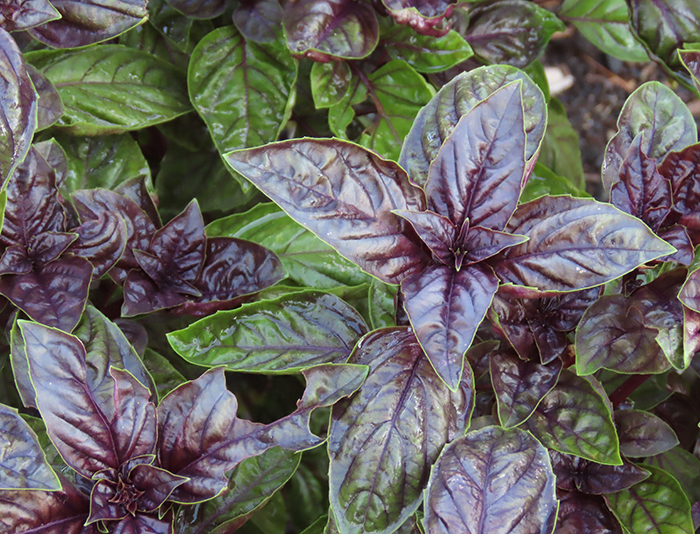Garden Talk
Horticultural Highlight: Sweet Basil
In this series, the staff of Duke Gardens highlights plants you’ll find within our 55-acre living collection. This week, summer horticulture intern Cora Borgens discusses a favorite summer annual in the Charlotte Brody Discovery Garden.
Botanical name: Ocimum basilicum
Common name: Sweet basil
Family name: Lamiaceae (Mint Family)
Native range: Southeast Asia and widely cultivated worldwide
Location in Duke Gardens: Charlotte Brody Discovery Garden
USDA Hardiness Zones: 10-11
Sweet basil (Ocimum basilicum) is an easy-to-grow, fragrant and delicious herb that's perfect for any herb garden, cottage garden or Mediterranean-style garden. This plant is also a great way to bring color to a garden border or container.
Sweet basil grows extremely quickly in full sun into a lovely bushy form approximately 12-24 inches tall and 12-15 inches wide, with broad oval leaves that are green (or purple in cultivars like ‘Osmin’ or ‘Amethyst’). The flowers are usually white, but flowering will spell doom for your basil harvest! Basil naturally dies back after putting energy into flowering and producing seed. To prolong your basil harvest, pinch or cut off the flower stalks as the plant starts to develop them.
The plant’s scent and flavor come from high amounts of volatile aromatic compounds, in this case, the compound eugenol, which is also found in cloves, nutmeg and bay leaves. The plant likely developed these high amounts as a defense mechanism against insects. Basil has a sweet and sometimes spicy flavor, and it is great as a dried herb or fresh garnish, or when used in sauces like pesto. However, the fresh leaves do not refrigerate well, so cut stalks are best stored in a jar of water on your kitchen counter until ready to use.
Photo information: Close-up of purple basil leaves (Osimum basilicum 'Amethyst') in the Charlotte Brody Discovery Garden, by Sue Lannon.






